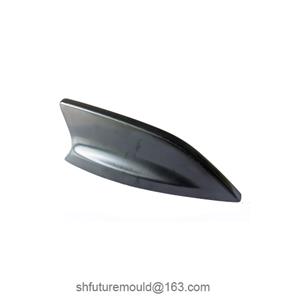Common Issues in Thin-Wall Injection Molding
Thin-wall injection molded parts offer advantages such as lightweight, high strength, and energy efficiency, making them widely used in electronics, automotive, and other industries. However, due to their thin wall thickness, they pose unique challenges in the injection molding process.
I. Filling Issues
Short Shot:Cause: Insufficient injection pressure or velocity, inadequate melt temperature or mold temperature, contaminants in the barrel, or a restricted gate size.
Solution: Increase injection pressure and velocity, raise melt and mold temperatures, clean the barrel, and enlarge the gate size.
Jetting:Cause: High-velocity melt entering the thin-wall cavity can lead to jetting, where the melt sprays towards the far end of the cavity rather than filling it uniformly.
Solution: Adjust injection velocity and gate location and shape. Implement a multi-stage injection velocity profile, starting with a lower speed and gradually increasing it. Optimize gate design for smoother melt flow.
II. Cooling Issues
Non-uniform Cooling:Cause: Inefficient mold cooling system design or improper injection molding parameters.
Solution: Optimize the mold cooling system design to ensure uniform cooling channel distribution and distance from the thin-wall areas. Adjust cooling media flow rate and temperature based on part geometry and wall thickness.
Insufficient or Excessive Cooling:Cause: Insufficient cooling time can lead to part deformation and dimensional instability, while excessive cooling time reduces production efficiency.
Solution: Determine the optimal cooling time through experimentation and simulation, considering factors such as material, wall thickness, and mold temperature. Utilize thermal analysis software to predict cooling time and make adjustments based on actual production conditions.
III. Quality Issues
Warpage:Cause: Non-uniform cooling and residual stresses within the part.
Solution: Improve cooling uniformity and reduce residual stresses by adjusting process parameters such as injection pressure and holding time. Incorporate structural reinforcements like ribs to enhance part rigidity and minimize warpage.
Surface Defects:Cause: Rapid melt filling and cooling can lead to surface flow marks and sink marks.
Solution: Optimize injection speed and mold temperature. Lower injection speed and higher mold temperature can improve melt flow and reduce surface defects. Polish the mold surface for a smoother finish.
- Injection Mold
- Automotive Injection Mold
- Electronics & Electrical Injection Mold
- Consumer Goods Injection Mold
- Airplane Components Injection Mold
- Medical Components Injection Mold
- Irrigation Components Injection Mold
- Injection Molds




